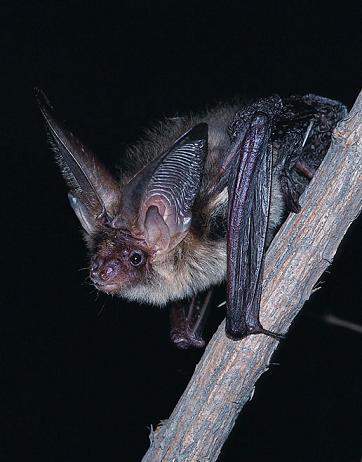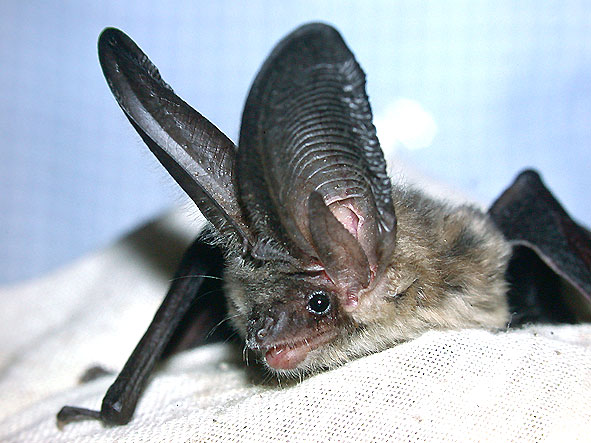Plecotus ognevi
Ognev's Long-eared Bat
Morphological description Life history Distribution Habitat Roost sites and roosting patterns Emergence and flight pattern Foraging behaviour Echolocation calls Status and protection
Morphological Description
· The taxonomy of bats in the genus Plecotus has been addressed by Spitzenberger et al. (2006). many cryptic species were recognised. Most of the bats across northern China belong to the taxon P. ognevi.
· Brown dorsally, off white ventrally.
· Long thumb and claws. Sibling species of the western P. auritus.
· Pronounced concavity in the dorsal profile of the anterior part of the skull is diagnostic.
· Two females captured 100 km SW of Beijing had forearm lengths of 40.0 mm and 40.6 mm.
Life history
· Little known
Distribution
Westernmost records are from the rim of the central Siberian highland. Extends east to the Korean peninsula (Spitzenberger et al. 2006). P. ognevi has a wide distribution across north China. Spitzenberger et al. (2006) described two other cryptic species from China with more restricted distributions: P. strelkovi and P. kozlovi. P. strelkovi inhabits the xeric mountain ranges of central Asia, and includes specimens from eastern Tienshan. P. kozlovi is the largest member of the genus Plecotus and is known from the Gobi Desert, inner Mongolia, and the arid basin of the Taklamakan Desert in Xinjiang Uygur (Spitzenberger et al. 2006).
Habitat
· Not known.
Roost sites and roosting behaviour
· A maternity colony found in a cave SW of Beijing.
· Emergence and flight pattern
· Little known.
Foraging behaviour
· Not known.
Echolocation calls
· Not known.
Status and protection
· There is no estimation of population size for China.
·Status uncertain, but wide distribution suggests not of conservation concern.

